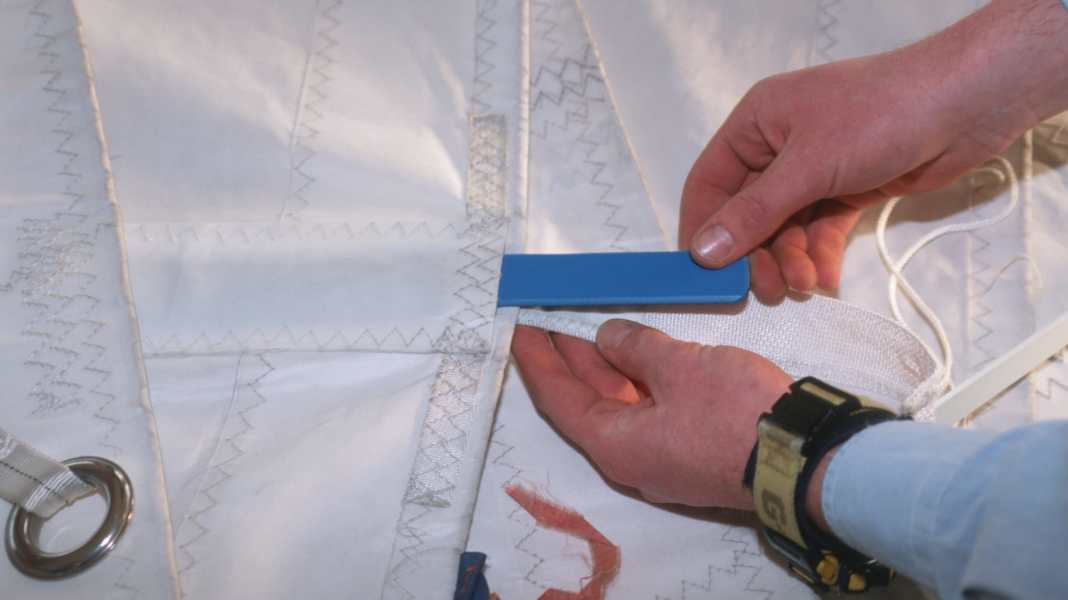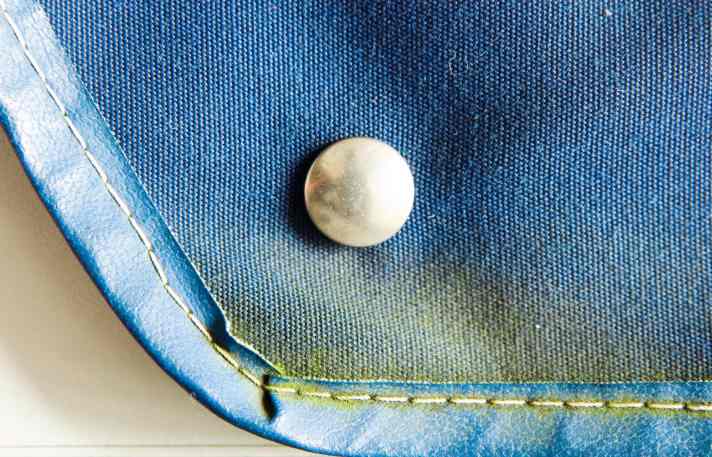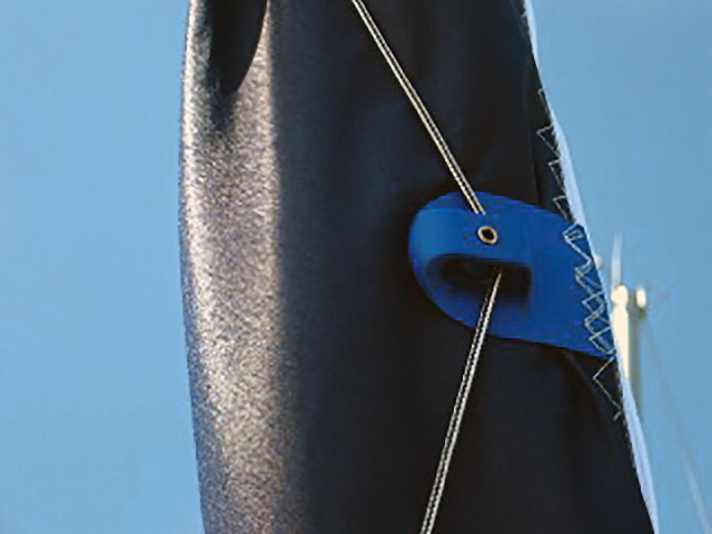
All work on the sails should actually be done in autumn - especially rinsing with clear water to remove the salt, as otherwise it attracts water, which can lead to mould stains or frost damage. At the same time, the owner should keep an eye on the finer details: look at the thimbles to see if they are starting to tear out. Check around the batten pockets in particular to see if the seams are still in order; this generally applies to all seams. These days, coloured thread is often used for this check, which makes it easier.
If this inspection is only carried out in spring, when sailmakers always have the least time, there is a risk that the start of the season will be delayed due to waiting times.
Remove mould stains
If the sails have mould stains, these must be removed, for example with TentoClean; this is available from any sailmaker or from tent accessories. However, always follow the instructions for use, otherwise the sail may be damaged. This product can also be used for mould stains on sprayhoods or in interior areas such as the wet room. He only recommends Schimmalgin Spezial from the same manufacturer for beige-coloured fabrics. Although this is the same as TentoClean, the instructions for use state that a fibre protector must be applied first, otherwise stains may occur. However, both products should only be used on fabrics with UV-resistant colour carriers; upholstery or clothing, for example, can fade. Sprayhoods or tarpaulins should also be impregnated regularly. There are also various products available for this, such as Prägnolin Ultra.

Ignore grease stains
Removing other stains, such as traces of grease, would be purely cosmetic measures; the cloth will not last longer or shorter and will not sail faster or slower as a result. It should therefore be left in the sail. Because the wardrobe always suffers from cleaning, regardless of the method used. If you still want to clean your sails, you should never use any chemicals, as these can attack the material. This applies even more to spinnakers or gennakers, where the material is even more sensitive, as well as to laminate sails.
The expert also advises against so-called professional laundries.
So when cleaning, get a cheap film from the DIY store. Lay the film on a lawn and use it as a base - never spread the sail directly on the lawn to keep out organic matter. Then get down on your knees and scrub with a very soft brush, lukewarm water and green soap. With laminate sails, you should bear in mind that they tend to have a capillary effect due to the tiny gaps in the laminate layers, i.e. they draw in water. Water in the sail can become a problem if you go out on the water at a time when there may still be night frosts. The ice in the sail can then crack and destroy the material. In such conditions, it is therefore better to take down the sails, even those made of woven cloth, after a trip that may still be raining and take them home with you. Because of this risk, it is also better to clean the sails with water when there is no risk of frost.
Do not treat wrinkles
It is better to leave creases in the sail instead of ironing them out. This problem hardly exists with today's cloths. Creases from storage pull themselves out again after 20 minutes of sailing. The situation is different with heavily resin-coated cloths. Creases are annoying, but it is no longer possible to fix them.
When attaching the sails, it is essential to ensure that the mast slides are threaded the right way round, i.e. with the top side facing upwards. Otherwise they break very easily or tear off as soon as the halyard is pulled through. If you have sliders with rollers, you should clean the rollers: use a toothbrush and warm water to remove salt and sand crystals and spray with lubricant spray before threading. The small springs on push riders can also do with a little spray.
Renew UV protection
Many cloths break prematurely due to a lack of UV protection. Tubular covers are also often not pulled over the sail with sufficient discipline; this should be done every evening. However, the tube has actually had its day; only around 30 per cent of yachts are still equipped with them.
The only reason in its favour is that it can be used several times, i.e. for different sails. On the other hand, there is now very good UV protection that is applied directly to the cloth and does not affect the sail's properties. This means that the sail is always protected as soon as it is rolled up. Such a sealant can also be applied to existing sails and costs around 33 euros per metre of leech and foot length. But: If you have such protection, you no longer need a tube over it. This always works a little in the wind and would rub the UV sealant off the sail.

Find out the cause of chafing
If there are chafe marks in the sail, for example in the area of the spreaders, the cause should definitely be investigated. This is because modern cloths no longer need protective patches; a protective layer is usually already applied to them. So if there are chafe marks, these are caused by the fitting such as the spreader cams, not the sail. If you want to stick patches on such areas, it is best to buy self-adhesive sailcloth from a specialised dealer. When making the patches, make sure that they are not too large and that the corners are rounded. There must be no air pockets when applying the patch.
Rig checklist
- Rinsing the salt from the sails
- Check seams and fittings
- Remove mould stains
- Cleaning roller slides
- Check UV protection
- Check for chafing
- Check sprayhood & Co.
Download free of charge: Checklist for the start of the season PDF

